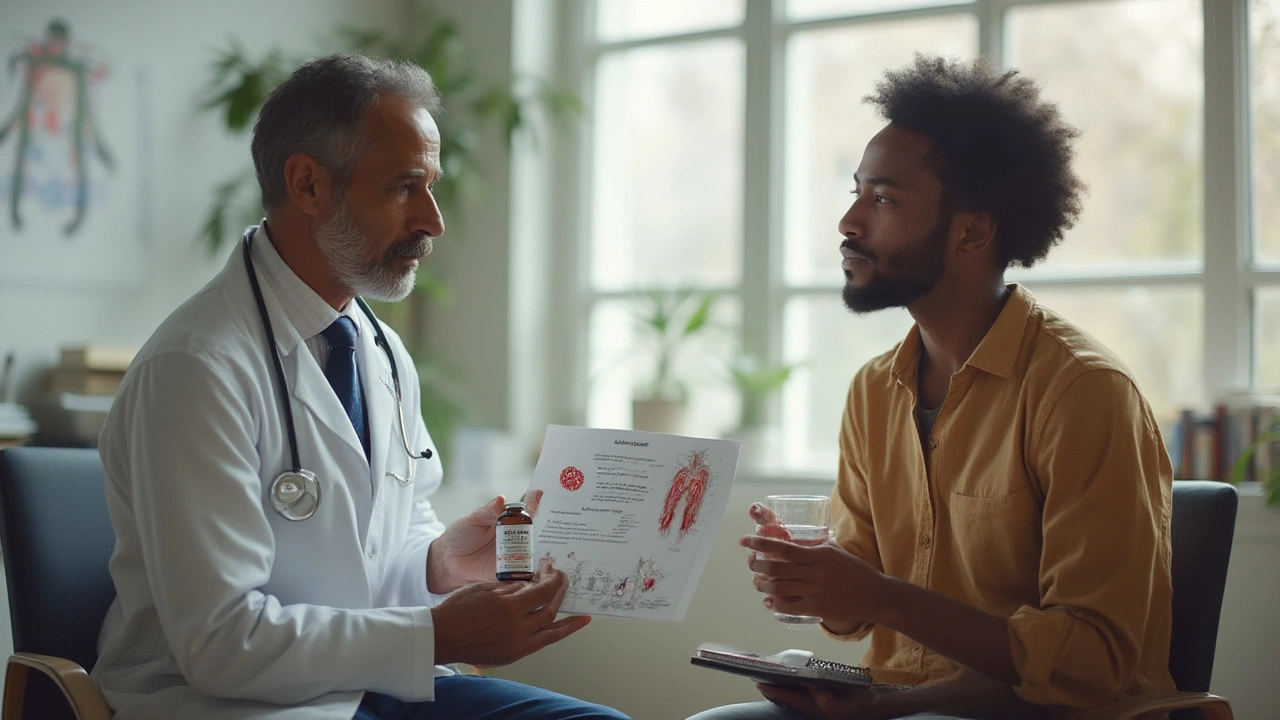Tuberculosis Treatment: What’s New and How It Works
If you or a loved one is facing TB, the first question is usually "How do we beat it?" The good news is that doctors now have dozens of options, from the long‑standing pills everyone knows to newer drugs that were originally made for other illnesses. This guide breaks down the basics, so you can understand why a doctor might choose one regimen over another and what to expect during treatment.
Why Repurposed Drugs Matter for TB
Drug repurposing means taking a medicine that already has approval for a different disease and testing it against TB. The trick here is that the safety profile is already known, so researchers can move faster to clinical trials. For example, the anti‑parasitic drug ivermectin showed promise in lab studies against TB bacteria, and the antimalarial clofazimine is now part of some multidrug‑resistant (MDR) regimens. Using these existing drugs helps fill gaps when the usual antibiotics stop working, especially in cases where bacteria have become resistant to first‑line meds.
Repurposed drugs also often cost less than brand‑new antibiotics, which matters for patients in low‑resource settings. When a medicine is already manufactured at scale, prices drop and supply chains become more reliable. That’s why many public‑health programs now include repurposed options in their TB treatment packs.
Current Approved and Experimental TB Regimens
Classic TB treatment still relies on a four‑drug combo taken for six months: isoniazid, rifampin, pyrazinamide, and ethambutol. This regimen, called “HRZE,” cures the majority of drug‑sensitive cases when patients stick to the schedule. The key is consistency—missing doses can let the bacteria develop resistance.
When resistance shows up, doctors switch to second‑line drugs like fluoroquinolones (levofloxacin or moxifloxacin) and injectable antibiotics such as amikacin. These treatments can stretch to 18‑24 months and often bring nasty side effects.
Newer, shorter regimens are now approved for specific resistant strains. The BPaL regimen—bedaquiline, pretomanid, and linezolid—can clear extensively drug‑resistant (XDR) TB in as few as six months. Bedaquiline and pretomanid were both developed for TB, but linezolid was originally an anti‑infection for Gram‑positive bacteria, showing how repurposing still plays a role.
Clinical trials are also testing other repurposed candidates. Rifapentine, a longer‑acting cousin of rifampin, can be taken once a week instead of daily, shrinking the pill burden. The diabetes drug metformin is being studied for its ability to boost the immune response against TB. While these aren’t standard yet, they illustrate the push toward simpler, shorter, and more tolerable treatments.
What does this mean for you? If you have drug‑sensitive TB, you’ll likely start with the four‑drug HRZE plan and finish after six months. If tests show resistance, your doctor will order a drug‑susceptibility test and may add or swap in second‑line drugs, possibly including a repurposed medication. Throughout, regular check‑ups are crucial to monitor side effects and ensure the bacteria are disappearing.
Sticking to the schedule, taking meds with food when advised, and reporting any odd symptoms early can make the difference between a quick cure and a prolonged battle. And remember, many community health programs offer free or low‑cost TB drugs, so cost shouldn’t stop you from completing therapy.
Bottom line: TB treatment today blends tried‑and‑true antibiotics with clever repurposing of older drugs. The mix aims to cure faster, limit side effects, and outsmart resistant bugs. Talk to your healthcare provider about the exact regimen that matches your test results, and don’t hesitate to ask why a particular drug was chosen. Knowing the why helps you stay on track and finish the treatment strong.
Isoniazid: Tuberculosis Treatment, Uses, Side Effects, and Precautions
All about isoniazid: how it fights tuberculosis, tips for safe use, potential side effects, and advice for staying healthy on this important TB medication.
